I’d been familiar with Viriginie’s work for sometime. What stuck me initially was their singularity. I’d never seen anything like them. Her craftsmanship and command of the various materials she employs to create a piece is matched equally by the depth and expression of the characters she creates. But seeing them in person is a whole different experience. They are, each one, a master work. Meeting her and having the chance to spend a little time with her was a true delight. I’m honored to consider her my friend. Virginie was gracious enough to spend some time answering a few questions about her life and art. Ladies and gentlemen, Ms. Virginie Ropars.
Was there anyone in your family or among your family of friends that was artistic?
There are several artists in my family, on my mother’s side mainly. My cousin is a graphic novel artist and one is a jewelry creator. My grandfather was very artistic in music and painting. My parents have always encouraged me in this field, as long as I’m happy with it.
How old were you when you knew you wanted to be an artist?
I really don’t remember. It’s always been part of my life. It hasn’t been a choice, really. I’ve just been following what was inside me. When I was 15, I had to choose between two schools; one was art, the other biology. I was very fond of biology, and I would have loved working in that field, but there was a good deal of mathematics involved, which was not one of my best subjects. Art looked much more appealing and could also lead me to many different things.
Do you remember the first thing you made that felt like making art?
Well, I don’t really remember. As a child I was always drawing or building stuff. I made clothes for my Barbies, dyeing and cutting their hair, changing their make-up, and inventing incredible lives for them; Rock star, executive woman, princess, terrible goddess… etc. As you can see I’m still the same today !
Describe yourself as a teenager.
I was weird, but nice. I was happy in my family and happy alone in my bedroom. We lived in the country, and it could be rather lonely with no friends around, I was an uncommon teenager, very fond of weird things. My bed room was like an Arabian tent. I made myself a canopy bed with black fabric and pins, it was wonderful! There were pictures of things everywhere, you couldn’t see the walls. The ceiling was covered with fabric too. Everything I thought beautiful was there. My bedroom was the place I felt comfortable and safe. I had only a handful of good friends at school. They were kind of weird like me. I never felt lonely. It warms my heart to know I have good friends. The way I see friendship, there’s no need to be always together. Real friends are those you don’t see for ages and when you get together, it’s as if no time has passed.
Do you have formal training? College? Academy?
I have a Baccalauréat, with specialty in literature and art, and I have a Master’s Degree in graphic advertising. But I didn’t work in that field after my degree. I moved on to video games and became a 2D/3D artist.
Do you draw, paint, illustrate? If so, do you think that has helped in your sculpting?
I have been drawing since I was very young. I haven’t had much time or need to draw for a few years, but it surely helps me in my work today. It helps me see things like color and composition. I’ve always been fascinated by illustration and painting and in a way I feel very close to illustration even though I work in 3D.
What brought you to sculpting?
I did some sculpting in school with clay. It was great but I didn’t like working with water based clay and something was missing. It was frustrating too because it wouldn’t let me do everything I wanted to do. I think now it’s because it’s hard for me to work with one single material. I’m fascinated by patinas on bronze and mixed material sculptures, with ivory, metal, glass… etc
When I was working in video games, I spent my spare time making stuff like clothes, jewelry, embroidery, leather things. I think it was necessary to stay in contact with real, physical materials, I spent my day in front of a screen working on virtual things and I felt something was truly missing. One day, I thought about making figures, I first thought about making them with fabric, but it was more fun to sculpt a head, hands and feet. I tried polymer clay and was so happy with the material that I kept with it. I was able to put everything I loved in that making process, and it was easy and really fun to work with textures, colors, etc. There is no end to it, there are always things to improve, it’s impossible to get bored, that’s what I enjoy the most.
How did you develop your style?
I started making some figures to show at doll shows in France, it was the only place to show my work and take part in something. I wanted to sell my work, so I tried to fit the taste of the public, which is a silly thing to do really, but it worked as a start. It gave me time to improve and test things. I always knew I wanted to make what I’m doing now, speaking of style. Then I started doing more of what was in my heart.
Some people where very surprised. A lot of people just left me aside, lost to the cause. They didn’t understand what I was doing. But I gained many other followers. I just didn’t feel my place was in the doll world. So, I let things happen. It was the best thing to do, and the only thing I could do, I had not much choice. I started showing my work at some shows and on internet and the public came. My main goal is to make things I love to make, that’s how I find happiness in my life. I try to improve, challenge myself and go ahead, I make choices when it’s needed, I say yes, I say no. I always deal with what I have inside, and if things must happen, it will happen in time.
Can you describe your working method?
I always start when I know where I’m going, I’m not the kind of artist who takes a piece of clay with no idea and see what happens. My work is very detailed, and I can only leave a small amount of things to chance. My pieces are very elaborate. It’s very difficult to improvise, when your work must be constructed in removable parts. Of course there are still parts of my work which are free until the end. I try to be open to the creative impulses on clothing, make up and hair style, even if I know the general look. Really it’s designed like an illustration; composition, colors, style and details. And most of all, intention
How much does the character you’re developing influence the final creation? Have you been in a situation where the character has helped guide you in a direction that surprised you?
The character is always guiding me, I always start with the head. Really it gives me everything, I only have to follow what the head’s expression says to the rest of the body. While I sculpt the expression, I always try to focus on what this little head could have in mind, the things I must show, and things I must only suggest. I try to see the character like I would see a real person. In real life, people rarely have one single emotion on their face. The mouth can say something the eyes something else, size of the pupils, position of the eyelids, the chin, twist of the mouth, position of the nose, even the muscles around the ears can tell something. That’s what I seek when I sculpt a head, I’m very sensitive to that with real people, so I pay attention to that in my work. I couldn’t say I’m surprised, but some characters might be more or less expressive than I thought, or slightly differently.
Is there a difference between what you see what you do and what some people think you do?
Yes, but it depends on the people really. In France it’s hard for me to be labeled a sculptor, even if it’s my official job description to French administration. I’m someone who vaguely makes some sort of “figures” that some people would call dolls. Some people want to put me in a box, but that box doesn’t fit me. And if I’m not in that box, then I don’t exist. For some people I’m traveling in a caravan, selling voodoo stuff, eating hedgehogs, dogs on Sunday and probably children on the night of a full moon.
Or, I’m only a person with a strange hobby, which will never be called “art”. But that’s not my problem because: who cares ?… I know it’s hard to put a label on me, even for me it’s hard to explain. It’s not a comfortable place, but it’s mine. Sometimes I think it’s great, because it also means some kind of freedom, but when you are dealing with galleries for instance, it can be very upsetting, and disappointing. Being a “doll maker” is so reductive, and it’s not the way I see my work. Fortunately some people deeply understand and are open minded to artists with no labels and are willing to share with them and support their work.
Was there a point in your career where you felt discouraged and close to giving up? If so, what brought out of it and made you go forward?
It happened to me recently, Spectrum Fantastic Art Live gave me just what I needed at a very special time. I’d been through several difficult months before that event, and I was wondering a lot about what my future would be. But it’s a silly question, because what else could I do with my life? Spectrum was totally refreshing and I really enjoyed being able to share with people and see some followers I have. Maybe it’s cultural. As far as I can see, people in the U.S. don’t need to be told what I do to appreciate my work. I don’t have to explain again and again. I also see that on the internet, it’s easier. It was crucial for me to go to the U.S. this year. I’ve been part of a doll show in NYC since 2007, but it was different. I deeply enjoyed the freshness and sharing with everyone in Kansas City. It was obvious after that, I couldn’t stop, I had my answers and it was a blast. I don’t work for people who don’t give a f#*k about what I’m doing, I’m here to share with those who are interested and who feel connected with my work.
If time and money were not a consideration, what would you love to be able to do?
Really nothing else, I’ve made choices in my life to be able to do what I do now, without too many problems. It’s the only way I found to my happiness, so I think I just would continue on like this, following my own path as much as possible and enjoy my family and friends. I’m very happy, and there are some exciting projects ahead. I will see what happens.
What/who were you artist influences growing but. What/who are they now?
My taste in art, whether it’s literature, cinema, art … is pretty much the same since I was young. I love the ambivalence of things; characters, weird, odd and decorative things. So as I go on, it seems I only refine those tastes. I love symbolism, and art nouveau, I’ve been very much impressed by Goya and Rubens since I was child. My favorite painter is Gustav Adolf Mossa, a French painter from Nice, at the beginning of the 20th century. He’s at the top of my favorite hundred artists. My favorite sculptors have always been Carpeaux and Carriès, but there again there are hundreds. I’m also very interested in fantastic art and literature. I feel strongly connected to that and my mind is regularly blown away.
Do you listen to music as you work? If so, who/what?
Yes, I have two kinds of music I listen to while working; one to put myself in certain moods when I’m sculpting, and others to stimulate the energy when I’m doing clothing and painting. I have very eclectic tastes in music and it depends on the mood, and also what I’m interested at the moment. Currently, I’m very into neo-folk, and it’s also the theme I’m currently exploring in my reading. I’ve always been fan of Siouxsie and the Banshees, Dead can Dance, Bauhaus, Kate Bush, since I was a teen. But I listen to traditional Breton music, classical, medieval or things like Terrorfakt, My dad has very eclectic tastes in music, and I think it’s part of my education. He always been fond of rhythms, and so I am. My mum couldn’t bear the rhythms played too loudly so we always waited until Saturday morning, while my mum was working. My dad put some records very loud, and the glasses would be shacking in the cupboard. It was great ! I also watch DVDs while working, I should say I listen to DVDs. It depends on the mood I’m in and what I’m working on.
What do you most admire about yourself?
Well nothing particularly. I’m just what I am. Nothing admirable in that, I deal with the good an the bad.
What do you wish you could change about yourself?
Here again nothing much. I try to deal with the bad things in me, like everyone I guess. I’m not obsessed by being perfect. I have bad sides and bad habits like everyone else.
How do you see yourself in five years?
I think I don’t care, really. I’m here now, and I can’t tell you where I’ll be in five years. Maybe I’ll do something else, but for the moment I’m happy here in what I’m doing, and I want to continue on the path which is mine. And in what my life is, as simple as it is. I know some would consider it laziness, but it’s not. When I want something, I fight and make everything that’s needed. But I also let things happen, and let things pass without regret if I don’t feel connected to them. Doing this makes it easier to evolve in my own life. I don’t care about tomorrow. I used to be very anxious (over anxious) about that, but I’ve been through so many uncertainties in my life, freaking out, and it’s so exhausting, for no reason. I don’t worry about that now, and everything is brighter.
If you were not the artist you are, what would you like to try doing?
I could be many things. If I would have chosen biology instead of art, in an ideal life, I would have loved to work on viruses, or to study endemic species of animals and plants. Also, I think I would have loved to breed bees, and make honey and lots of stuff with the hive products. Or do research on the intelligence of animals. Things like that.
What would surprise people to learn about you?
That I’m perfectly normal and happy !
How do you relax?
By reading books, and it’s very hard for me to spend a day without reading. So I have to deal with that in my schedule or I’m not feeling in a very good mood. Also I spend time with David, or with my family or with a handful of good friends. We don’t see those friends very often, but we really enjoy spending one or two days or a week-end all together. We talk, we laugh a lot. We play games, we talk about our jobs. And we make good food! David and I also enjoy riding bicycles on the little roads we have around.
Do your dreams influence your work?
Well, I’ve had dreams with good ideas but they would be very difficult to make. I’m still thinking about some solutions about one character I dreamt of years ago. Though I think it would be more interesting in a music video, because there is no point to it really, and it could be used just as an illustration. But I think actually making it would be a little disappointing. In fact, maybe this character is better in my dream, and so it should stay in my dream.
What is you favorite movie and why?
There are many movies I like, but if I have to make a choice, as they say, if ever I was stranded on a desert island, I would say Rosemary’s baby. I’ve seen it nearly 50 times since I was 14. I’m 36 now, and when I put this DVD on, it’s just like my favorite story read by my mum before sleeping. This movie never ceases to interest me, everything is so great, I don’t know how to explain it. Everyone is hiding who they really are, and everyone is playing with others. I also like the pregnancy theme inside and how it is shown. But like in music, my tastes are eclectic here too. I also love the Aristocats, The Wicker Man and Peter Greenaway movies.
Born in Brittany (France) in 1976. Virginie Ropars’ figures are in between sculpture, fashion design and illustration, building up visions sometimes full of wonders. Other times strange and gloomy where femininity takes away the main place. An inner world she primary expressed in drawings while she worked as a 2D/3D graphic artist for computer games and TV cartoon industry.
Virginie’s work is shown throughout Europe in art galleries and art shows and also in United States and Russia. Her work has been featured in many magazines and publications, and she recently received a Spectrum Gold Award (2012), for her dimesional interpretation of Brom’s main character Jack, in The Plucker novel. Aside from her personal works, she often collaborates with other artists, mainly illustrators, as Brian Froud, Olivier Ledroit, Barbara Canepa, Jean-Sébastien Rossbach, on some special dimensional works. She currently lives and works in Brittany.
For more images and information, visit Virginie’s site at: http://vropars.free.fr/


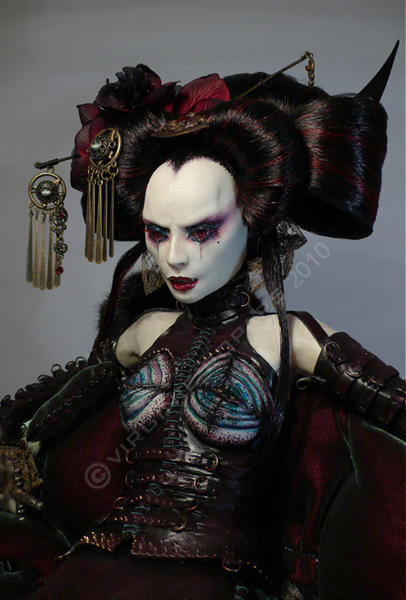
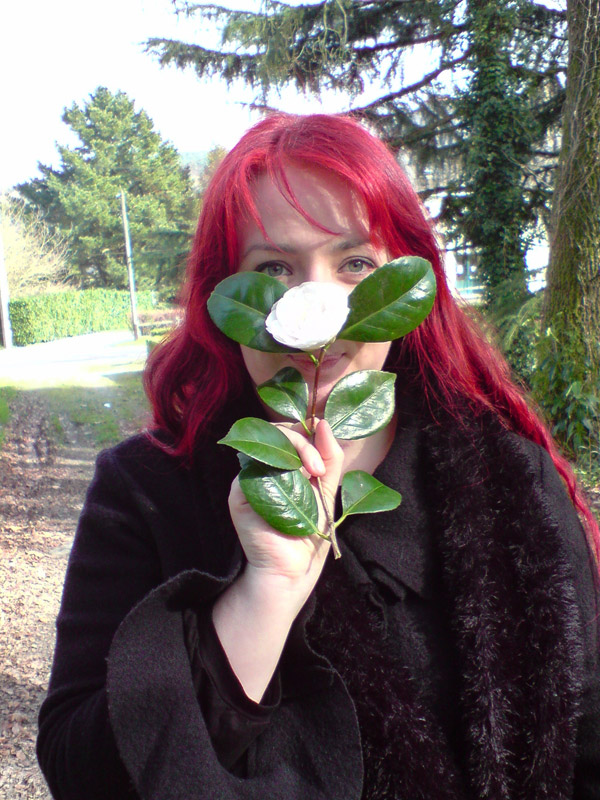
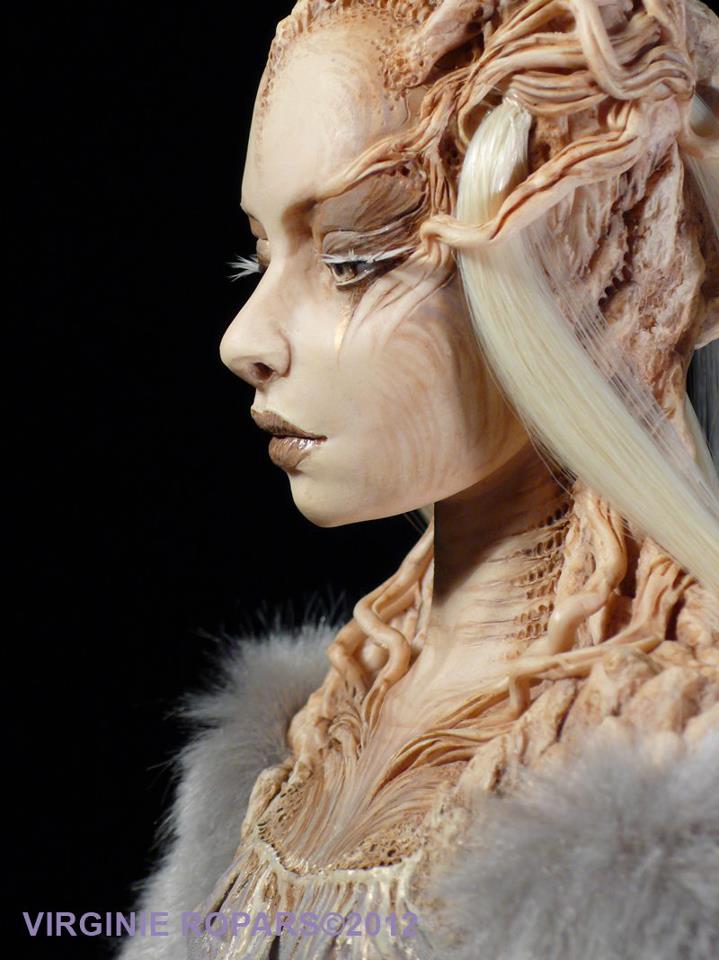
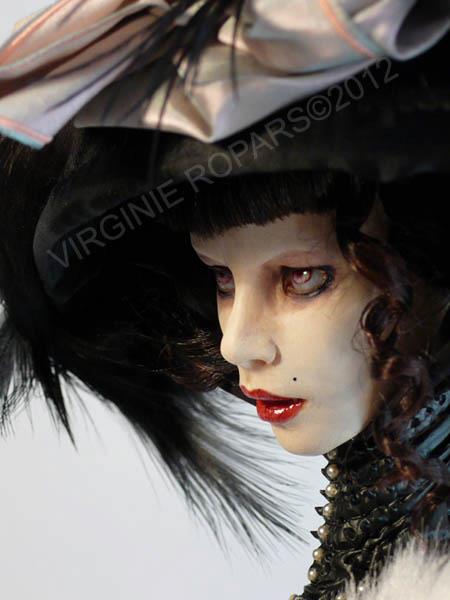
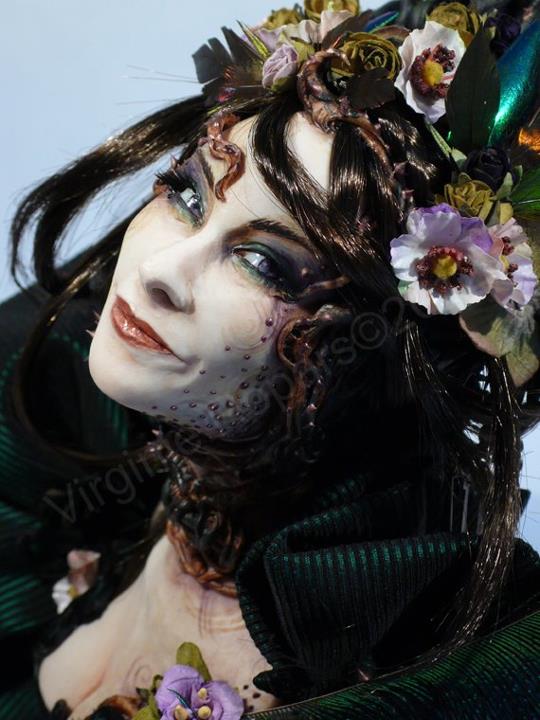
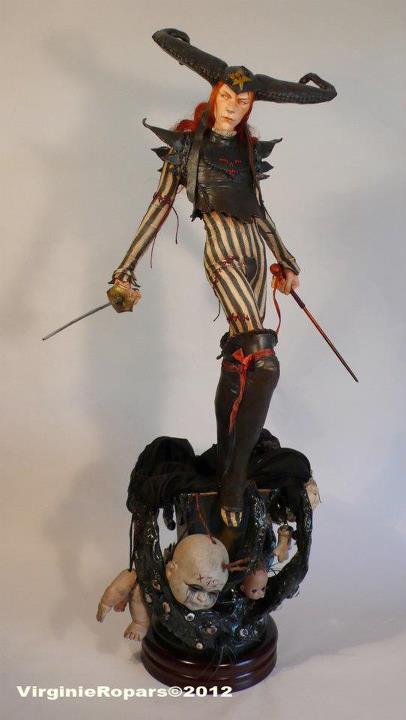
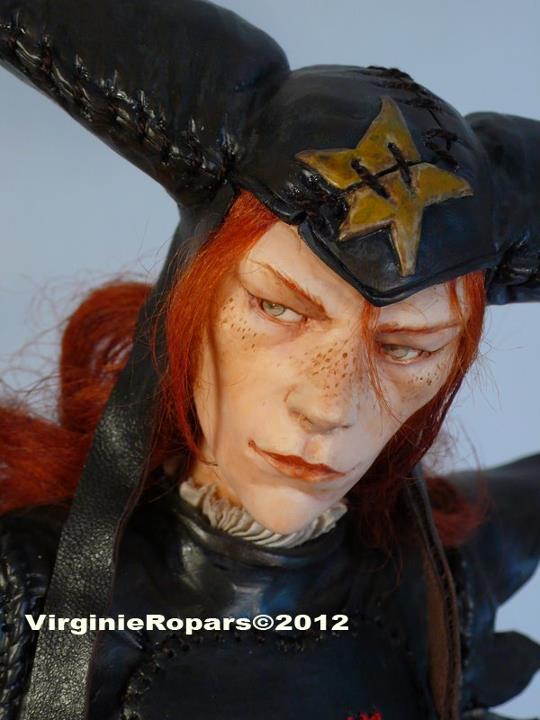
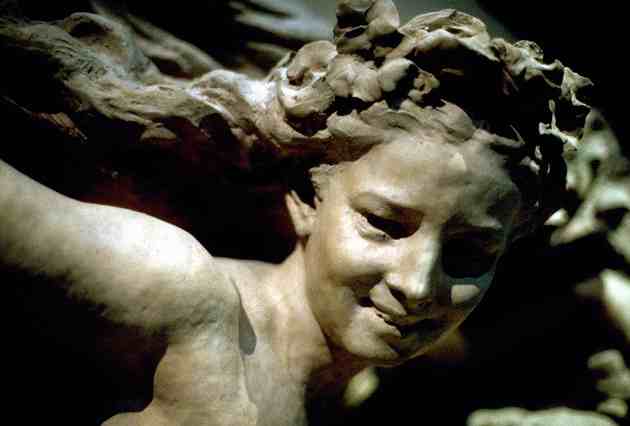
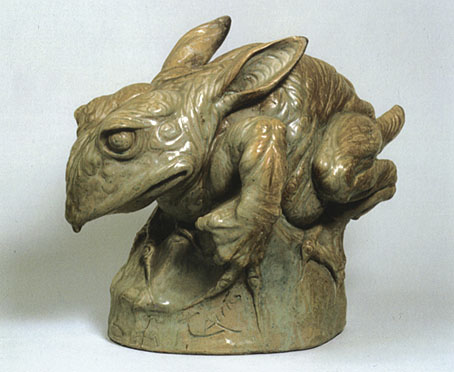
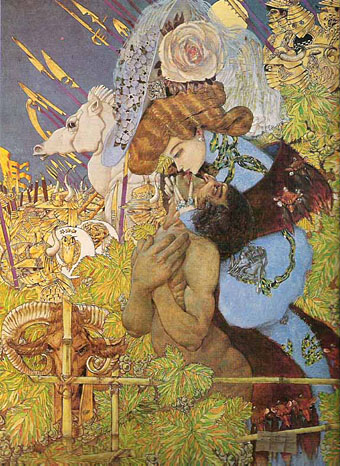
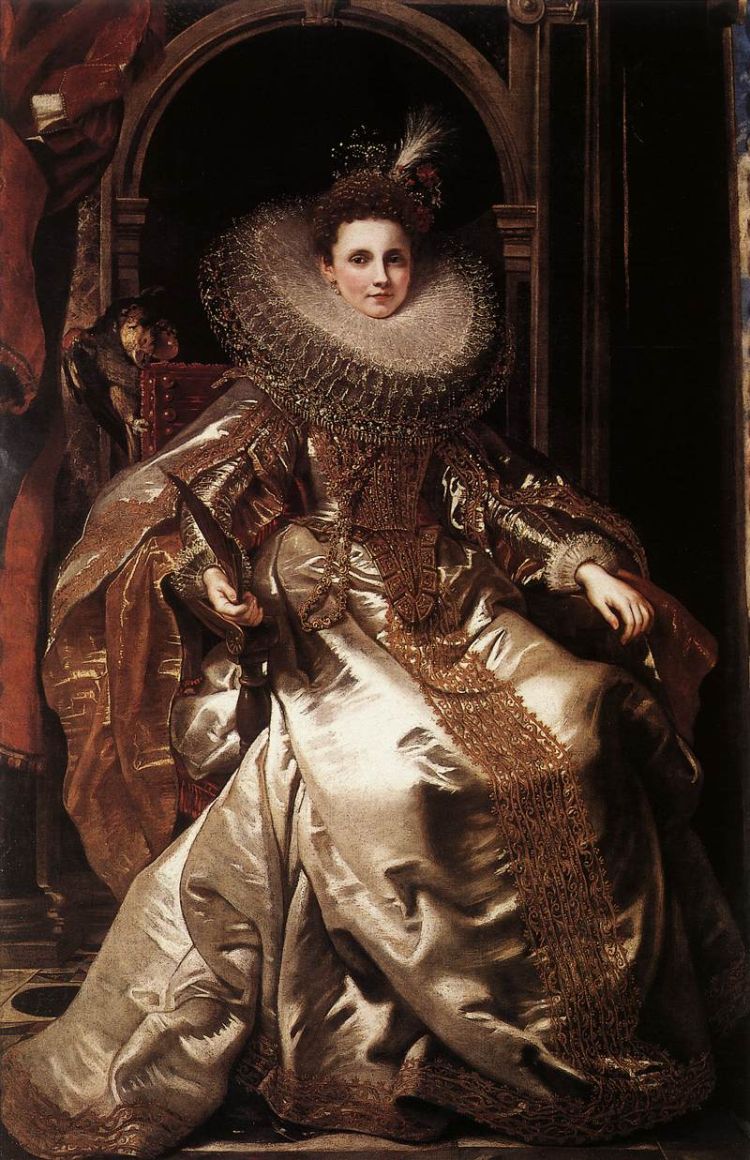
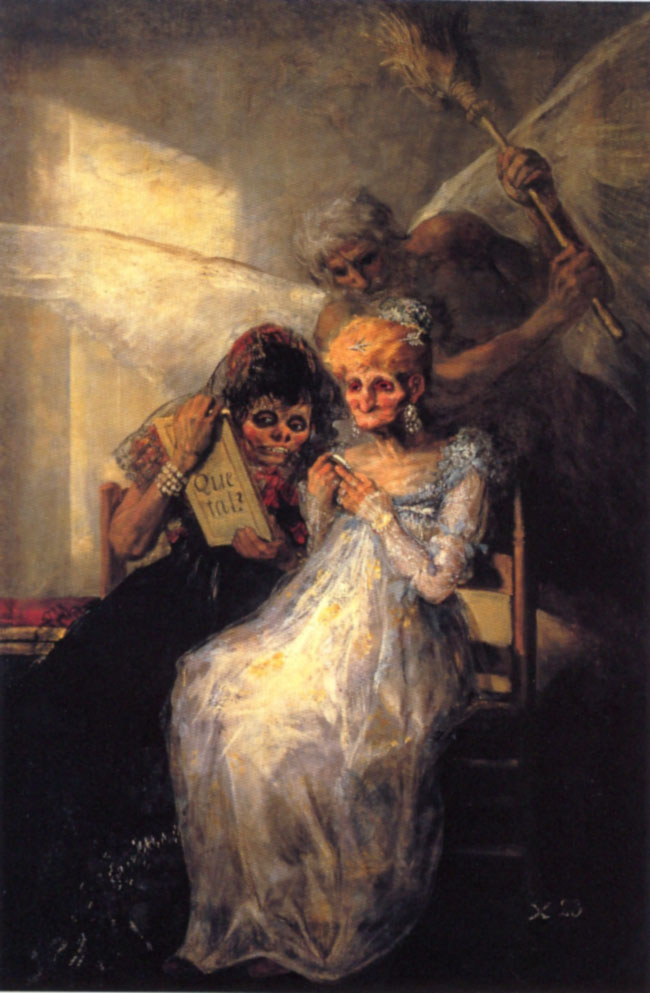

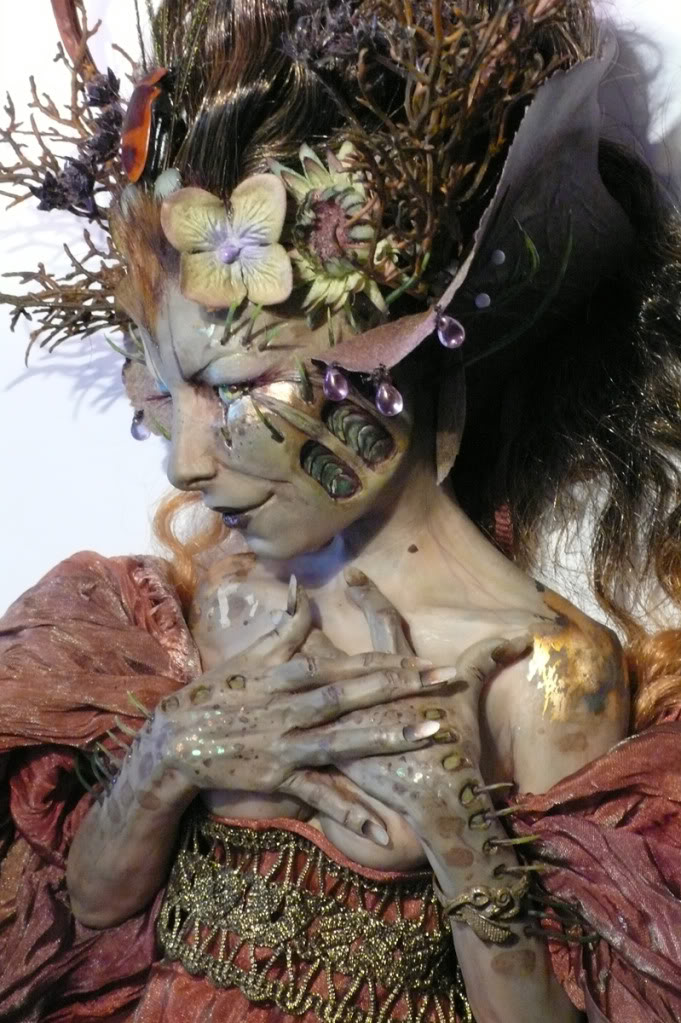
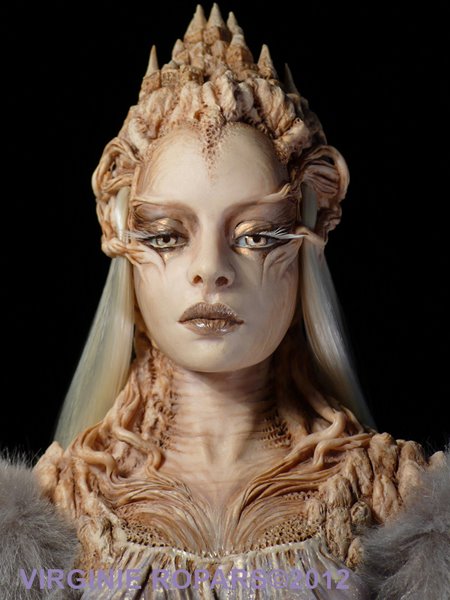
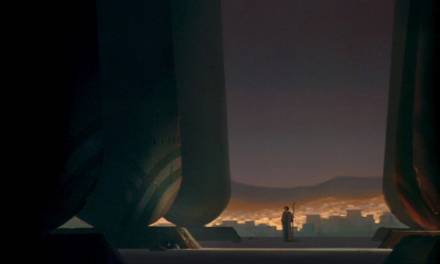

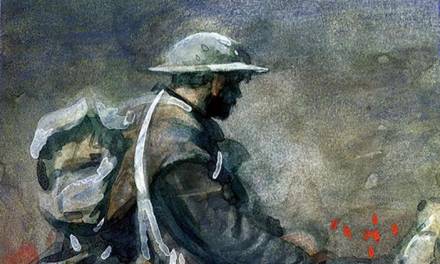
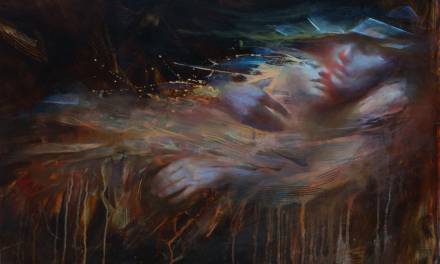

Amazing and inspiring. Thanks for this interview.
Bravo Virginie—and Tim for bringing us this interview!
Great Interview, Thank you Tim and Virginie!
Wonderful! Thank you Virginie, you have a beautiful outlook on life and it shows in your work. Thanks Tim.
Keep up this good work, you have a nice blog over here with much good information! When you post some new stuff, Ill visit your blog again and Ill follow it.
Thank you Arnie !
Thank you Tim for such great questions !
Fantastic interview. I love what I've seen of Ms.Ropar's work, which is like the best fantasy art brought to life in all of its intricate details. Truly amazing talent.
Excellent interview and your work is amazing.
I just finished viewing in AWE the works fo Virginie Ropars. I spent about 2 HOURS! I'm sold. Wow oh wow. It is always interesting to see what makes an artist tic, their music,movies even. Loved this interview.
Thank you for this interview. I've recently discovered her work and to me, it's just breathtaking and a very exquisite art.